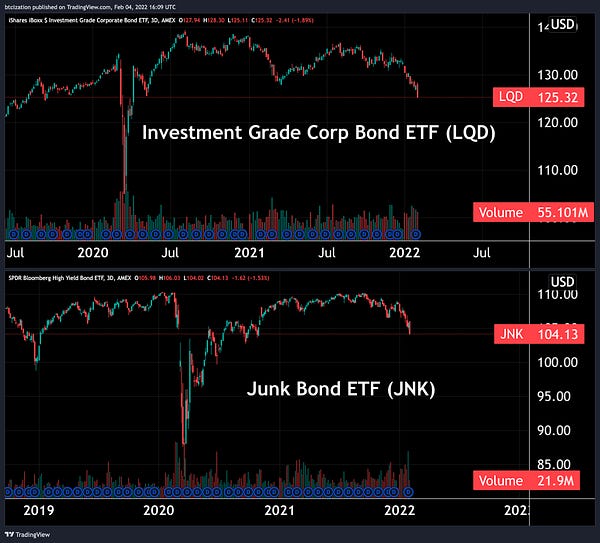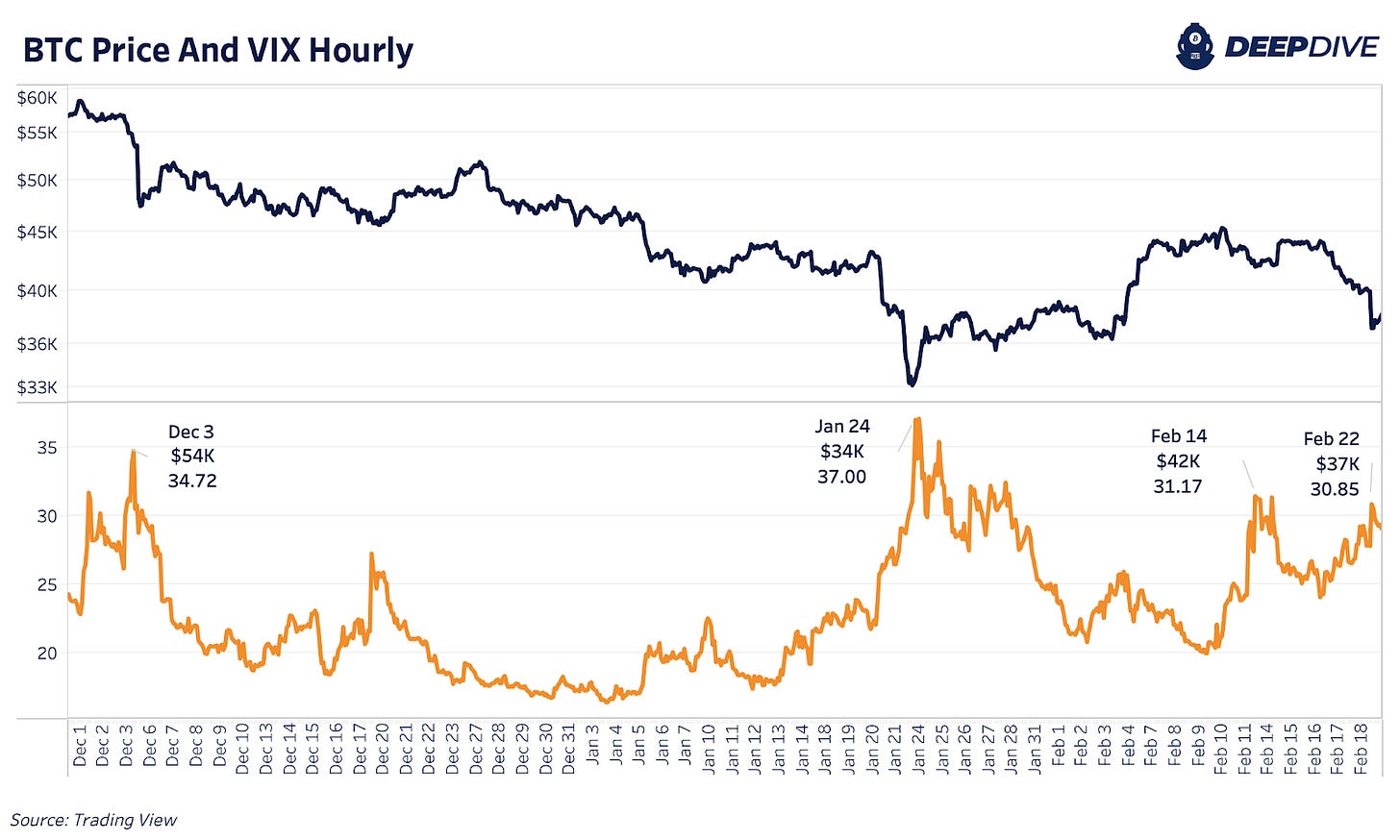The Daily Dive #152 - Volatility, Tech Stock Drawdowns And Credit Markets
Volatility Spikes, Bitcoin Follows
We have covered the relationship between equity market volatility and bitcoin price action extensively since the start of the new year, as the inverse correlation between the price of bitcoin and the VIX (S&P 500 Volatility Index) remains extremely strong. Volatility spiked yet again today as markets reacted to Putin’s speech from yesterday, recognizing the independence and sovereignty of the Donetsk People’s Republic and the Luhansk People’s Republic.
With bitcoin currently down 43% from the highs at the time of writing, other assets (specifically the tech sector) have been getting hammered as of late. We compared the performance of bitcoin since its all-time high to major, select tech stocks across Google, Amazon, Microsoft, Tesla, and Facebook below.
While bitcoin is the worst performer of the bunch over the selected time period, market volatility in bitcoin is historically elevated compared to the other asset classes, due to the boom/bust monetization and adoption cycles of the monetary asset.
Bitcoin And The Dollar
Similarly, we have monitored the DXY (U.S. Dollar Currency Index) and its relationship to the bitcoin market, as a strengthening USD relative to other foreign currencies.


A rather interesting development recently has been the correlation between the Russian ruble and the price of bitcoin over recent months. While global risk markets have been selling off on news that Russia could engage in conflict with Ukraine, the ruble has weakened against the dollar, in tandem with bitcoin’s fall.
While there are a multitude of reasons for this potential correlation, it is most likely due to the flight to safety across risk assets (into the dollar) since the fourth quarter of 2021.
Credit Markets
In our last Daily Dive, which highlighted the new regime of increased volatility and decreasing liquidity across financial markets, we covered the increasing yields across credit markets as a catalyst for the risk-off environment .
With the recent dramatic sell-off in credit markets (the 10-year Treasury closed today with a 1.94% yield), financing costs for debtors across global markets have been on the rise.
We covered the movements in the credit markets and their potential market impact in issues #142 and #151 of The Daily Dive.


It has become increasingly clear to those with an understanding of credit markets that structurally the global economic system cannot function in an environment of sustained higher yields (higher debt servicing costs). As fixed income investors sell their assets due to inflation readings hitting 40-year highs, it sparks a feedback loop of increasing financing costs, increasing solvency and counterparty risk, less consumer spending, decreasing profit margins, and declining creditworthiness.
This reflexive cycle gets worse until a certain pain point threshold is reached, which is “resolved” with increasing levels of monetary and fiscal stimulus. We continue to bang the drum that bitcoin is your insurance against the binary endgame of the great fiat currency experiment.








